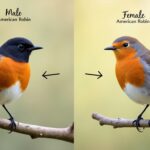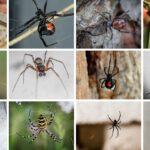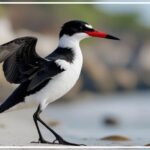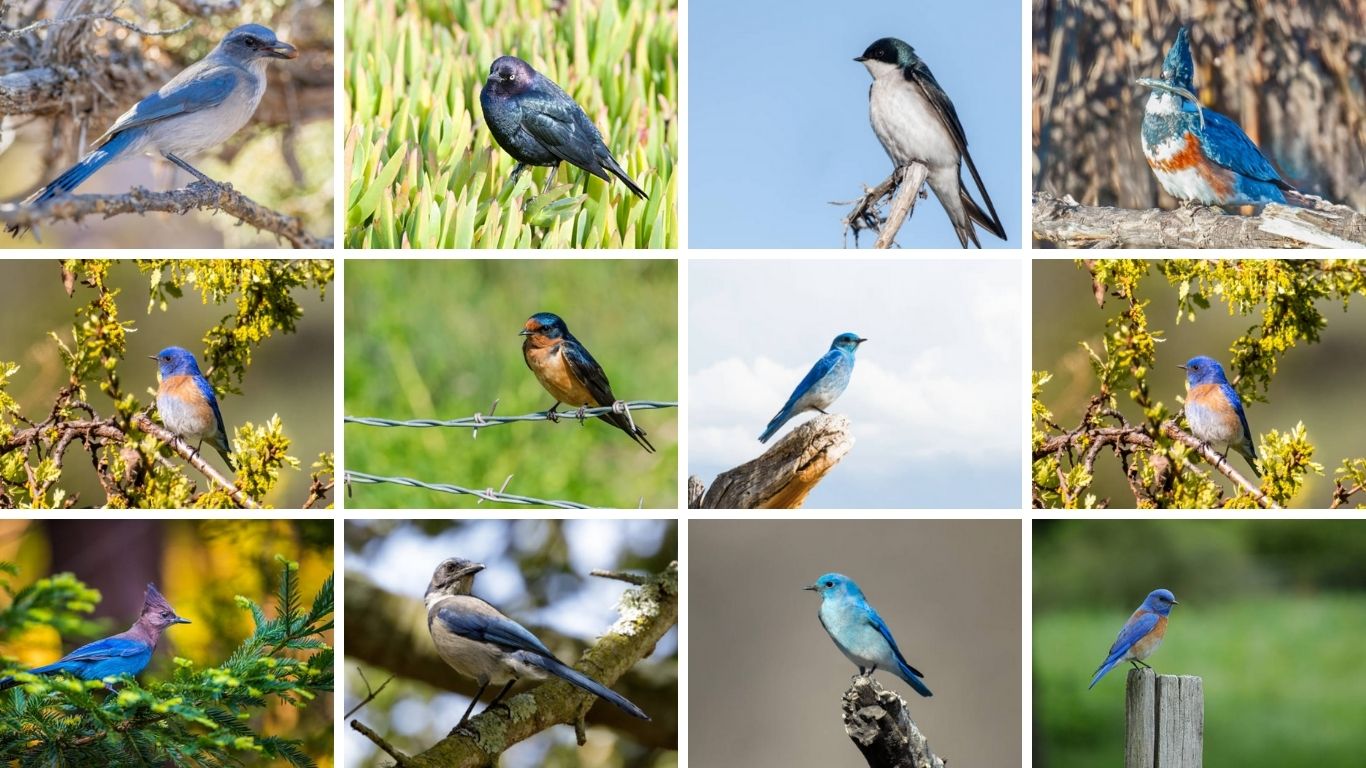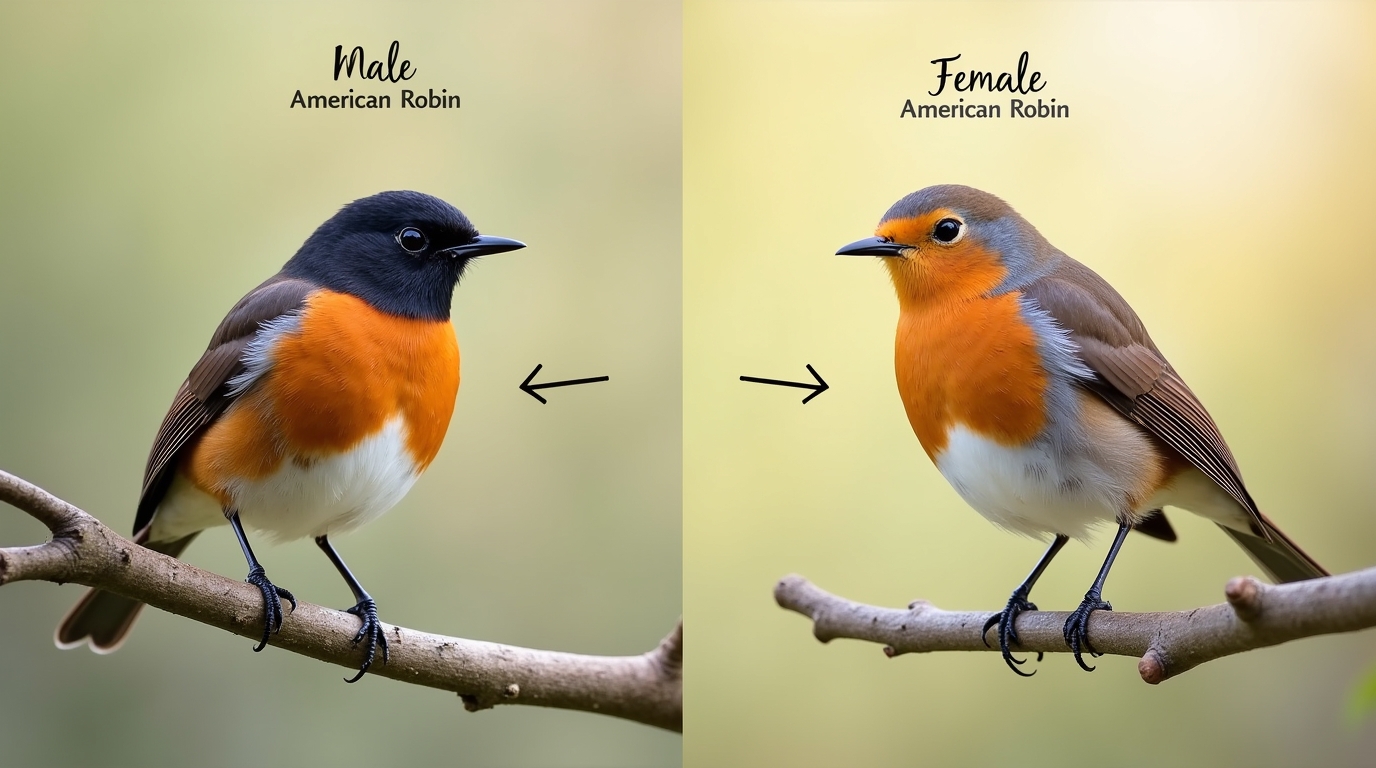California is home to a vibrant variety of blue-colored birds, from forest-dwelling jays to aerial swallows and mountain buntings. These birds brighten landscapes across the state, whether soaring through coastal skies or nesting in high-elevation woodlands.
In this article, you’ll discover 12 beautiful blue birds commonly found in California, along with how to identify them, where they live, and what makes each one unique.
1. Western Bluebird in California
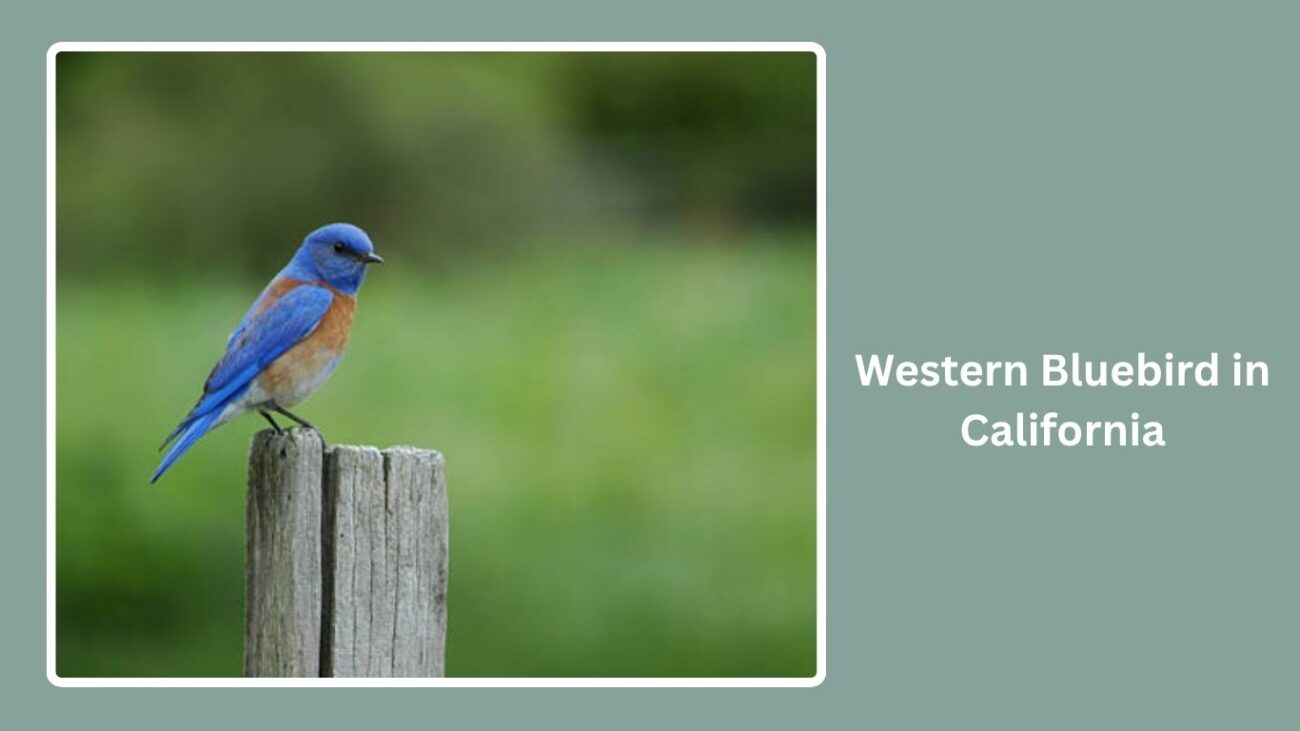
The Western Bluebird is one of the most charming blue-colored birds you can spot across California. Known for its vibrant plumage and sweet songs, this bird is often seen in open woodlands, farmlands, and even suburban areas. It is a year-round resident in many parts of California, especially in the central and southern regions, while some may migrate to lower elevations during winter.
Identification
- Size: Small thrush, around 6–7 inches
- Color: Bright blue upperparts in males, rusty-orange chest
- Female: Grayer with hints of blue on wings and tail
- Bill: Thin and straight
- Tail: Short and square
- Call: Soft “cheer” or “chuck” sounds
Habitat and Range in California
Western Bluebirds are found throughout much of the state. In Northern California, they appear more during the breeding season, while in Central and Southern California, they can be seen year-round. They prefer open areas with scattered trees and love nesting in natural cavities or nest boxes.
Behavior and Diet
These birds are insectivores and also enjoy fruits and berries, especially in colder months. They hunt insects from low perches and are social, often forming small flocks in the non-breeding season. Males are territorial during breeding time and help feed the young with the female.
2. Mountain Bluebird in California
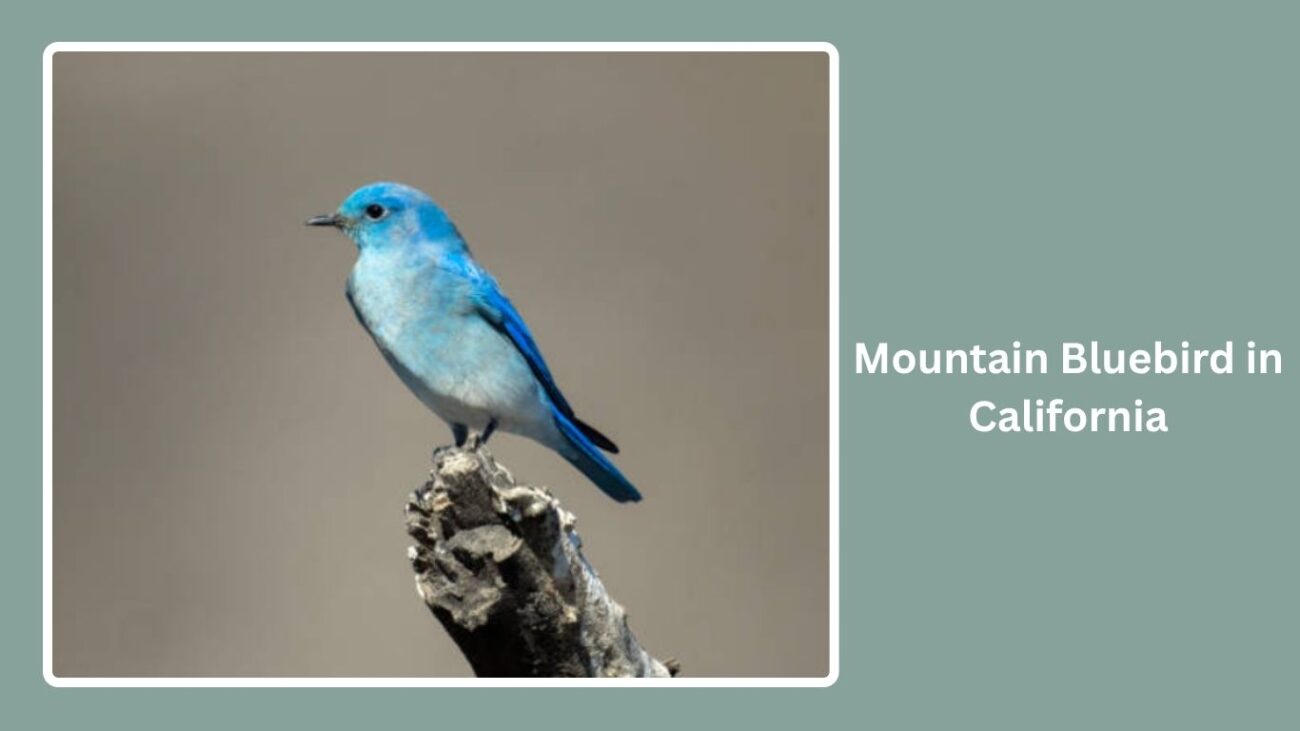
The Mountain Bluebird is a striking sky-blue bird that brings a flash of color to the open spaces of California’s higher elevations. Unlike the Western Bluebird, this species is mostly found in the mountainous and northeastern parts of the state, especially during the breeding season. They migrate to lower elevations or out of the state entirely in winter.
Identification
- Size: Medium-sized bluebird, around 6.5–7.5 inches
- Male: Vivid sky-blue all over, lighter on the belly
- Female: Grayish-brown with touches of blue on wings and tail
- Bill: Thin and straight
- Wings: Long and pointed
- Flight: Flutters gracefully between perches
Habitat and Range in California
Mountain Bluebirds breed in the Sierra Nevada, northeastern California, and higher-elevation meadows. They prefer open areas such as grasslands, sagebrush plains, and alpine habitats. In California, they’re usually seen from spring through late summer.
Behavior and Diet
They feed on insects, especially beetles and caterpillars, and occasionally eat berries. Known for hovering above the ground to spot prey, Mountain Bluebirds often nest in tree cavities or nest boxes. They are quiet and gentle birds, usually found in pairs or small flocks.
3. California Scrub-Jay

California Scrub-Jay is a common and bold blue bird found throughout much of the state. Unlike many other jays, it doesn’t migrate, making it a year-round resident in both urban and rural areas. These birds are highly intelligent and often seen in backyards, oak woodlands, and chaparral habitats.
Identification
- Size: Medium-sized, about 11 inches
- Color: Deep blue head, wings, and tail with a grayish back
- Chest: White with a blue necklace
- Bill: Strong and slightly hooked
- Legs: Long and dark
- Behavior: Confident, noisy, and curious
Habitat and Range in California
These jays are widespread from coastal regions to the Central Valley and into the Sierra foothills. You’ll rarely see them in dense forests or deserts. They are most common in oak woodlands, suburban gardens, and parks.
Behavior and Diet
California Scrub-Jays are omnivorous. Their diet includes insects, fruits, acorns, small animals, and even bird eggs. They are known for caching food and have excellent memories. These birds are also vocal and display complex social behaviors, including mimicking and problem-solving.
4. Steller’s Jay
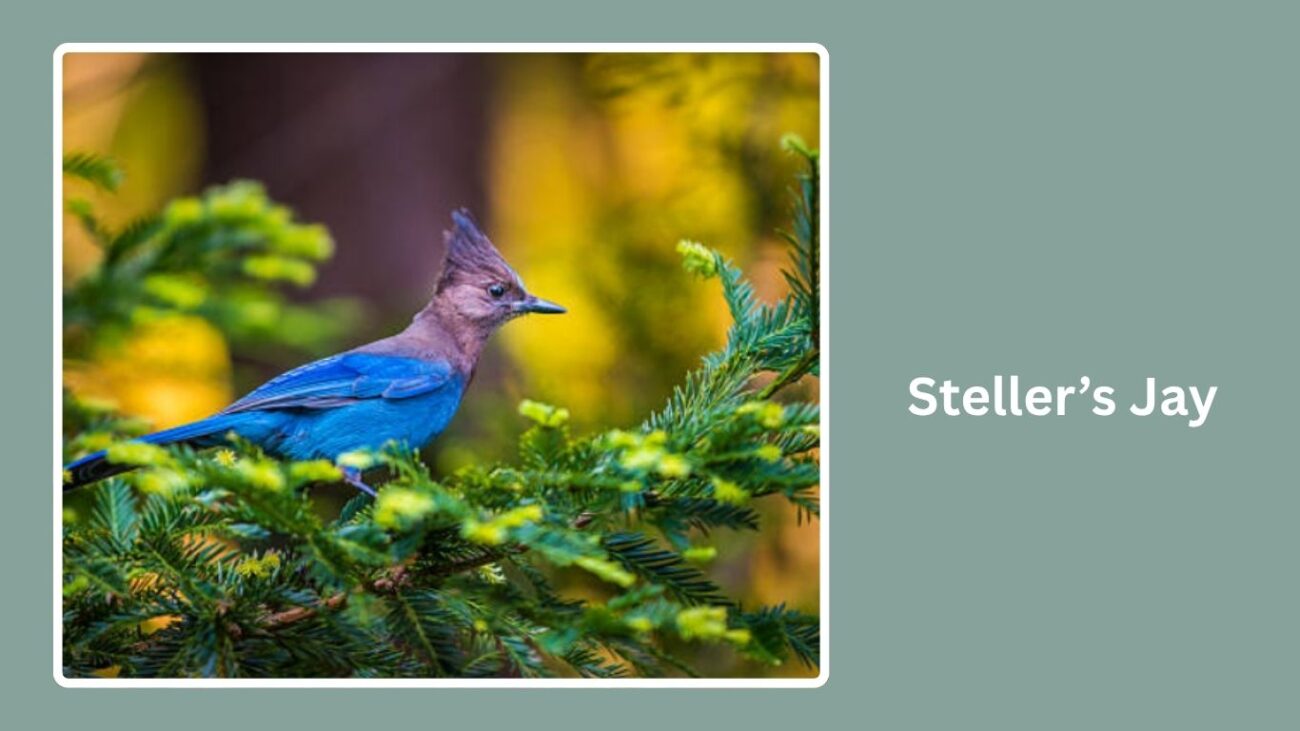
Steller’s Jay is the flashy, crested blue bird of California’s conifer forests. Recognizable by its black crest and loud calls, it’s often spotted in campgrounds and forested areas of the state. These birds are permanent residents in the higher elevations and are less commonly seen in flatlands.
Identification
- Size: Large jay, around 11–13 inches
- Color: Dark blue body with a black crested head
- Crest: Tall and bushy
- Tail: Long and blue
- Eyes: Dark, with a sharp gaze
- Voice: Harsh “shack-shack” and mimicry of other birds
Habitat and Range in California
Steller’s Jays thrive in the Sierra Nevada, Coast Ranges, and forested mountains. They prefer coniferous and mixed woodlands, from sea level up to 10,000 feet. Unlike other jays, they are not often seen in open, dry areas.
Behavior and Diet
Omnivorous and opportunistic, their diet includes nuts, seeds, insects, and even human leftovers. Steller’s Jays are known for their boldness, especially around campsites where they scavenge for food. They also cache food for later use and exhibit strong territorial behavior.
5. Blue Grosbeak in California

The Blue Grosbeak is a summer visitor in California, known for its rich blue coloring and thick bill. Though not as common as some other blue birds, it can be spotted in the warmer months in specific regions. This bird prefers brushy habitats near water and open fields with scattered shrubs.
Identification
- Size: Medium songbird, about 6–7 inches
- Male: Deep blue overall with two chestnut wing bars
- Female: Brownish with faint blue hints and wing bars
- Bill: Thick, cone-shaped, silver-gray
- Eyes: Dark and expressive
- Posture: Upright with a slightly heavy look
Habitat and Range in California
In California, Blue Grosbeaks are mostly found in the Central Valley, southern deserts, and foothill edges during spring and summer. They migrate south to Central America in the winter. Look for them in overgrown fields, riparian zones, and open woodlands with dense low cover.
Behavior and Diet
They eat mostly seeds and insects, foraging quietly in low vegetation. Males sing beautifully to mark territory during breeding season. They are elusive compared to jays and bluebirds, often hiding within shrubs but occasionally perching openly to sing.
6. Tree Swallow in California
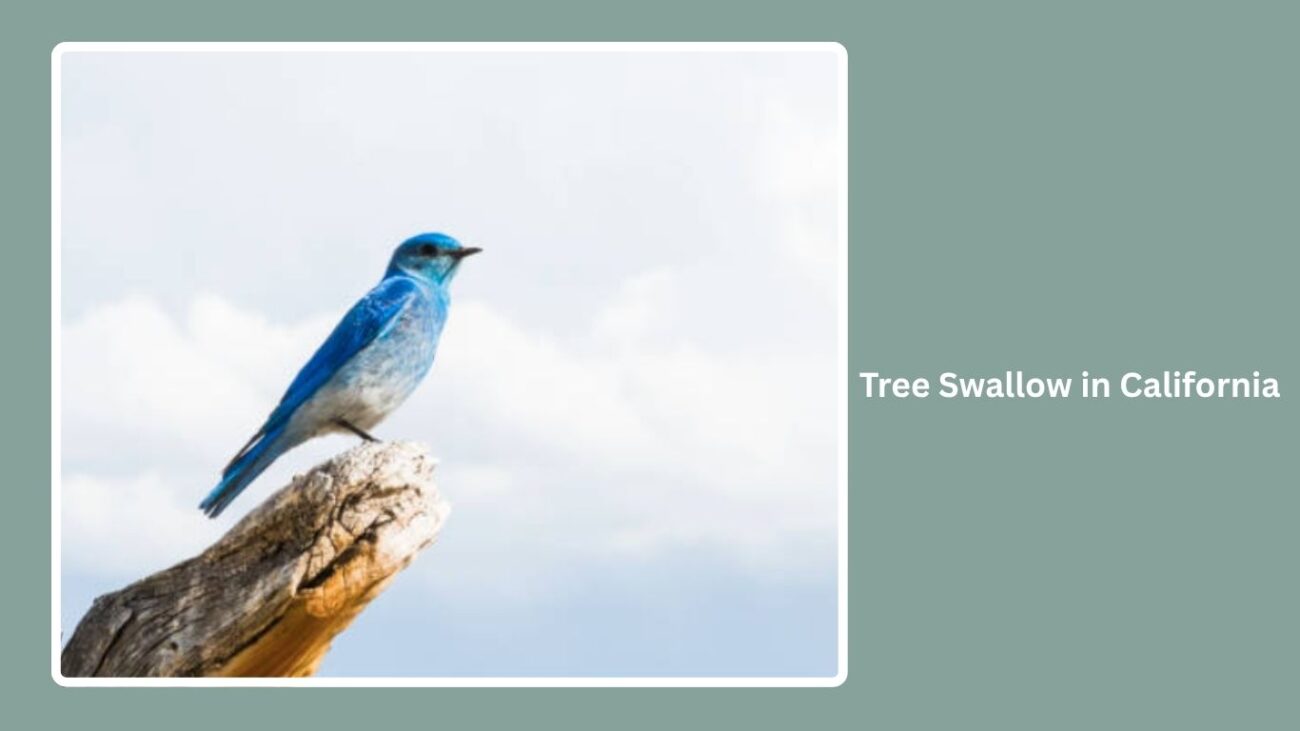
The Tree Swallow is a graceful, fast-flying bird often seen gliding over lakes, fields, and wetlands. With its glossy blue back and agile flight, it’s one of the most recognizable swallows in California. It breeds widely across the state during spring and summer and migrates south in winter.
Identification
- Size: Small, sleek bird around 5–6 inches
- Upperparts: Shiny blue-green
- Underparts: Clean white
- Bill: Short and flat
- Wings: Long and pointed
- Flight: Quick and acrobatic
Habitat and Range in California
Tree Swallows nest near water across much of California, including lakeshores, marshes, and open fields. They are most active from late February through early fall. Nest boxes placed near wetlands often attract breeding pairs.
Behavior and Diet
These birds primarily feed on flying insects, catching them mid-air with impressive agility. They also consume berries, especially in colder months. Tree Swallows nest in cavities and are often seen gathering in large flocks during migration. They’re quiet but occasionally chatter or sing while flying.
7. Barn Swallow in California
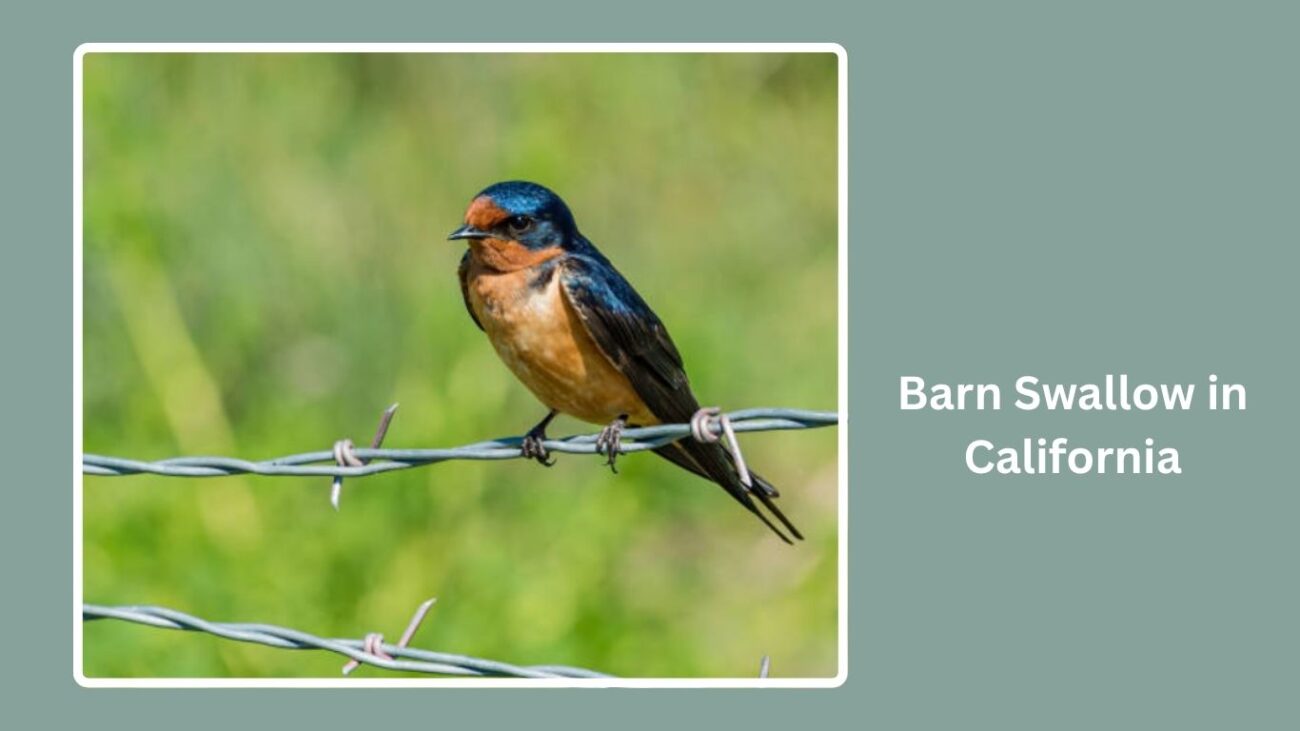
The Barn Swallow is a familiar and graceful bird often seen swooping over fields and water bodies across California. With its forked tail and fluid flight, this swallow brings life to rural and suburban skies from spring through early fall.
Identification
- Size: Small and slender, about 6–7 inches
- Upperparts: Deep blue with a metallic sheen
- Underparts: Reddish-buff belly and throat
- Face: Reddish forehead and chin
- Tail: Long and deeply forked
- Wings: Pointed and streamlined
Habitat and Range in California
Barn Swallows are widespread throughout California during their breeding season, favoring open areas like farms, grasslands, and wetlands. They build mud nests on buildings, under bridges, and barn rafters—hence the name. By late fall, they migrate to Central and South America.
Behavior and Diet
They feed almost exclusively on flying insects, catching them with sharp maneuvers mid-air. Barn Swallows are social and often nest in loose colonies. Males perform flight displays to attract mates, and both parents care for the young.
8. Lazuli Bunting in California
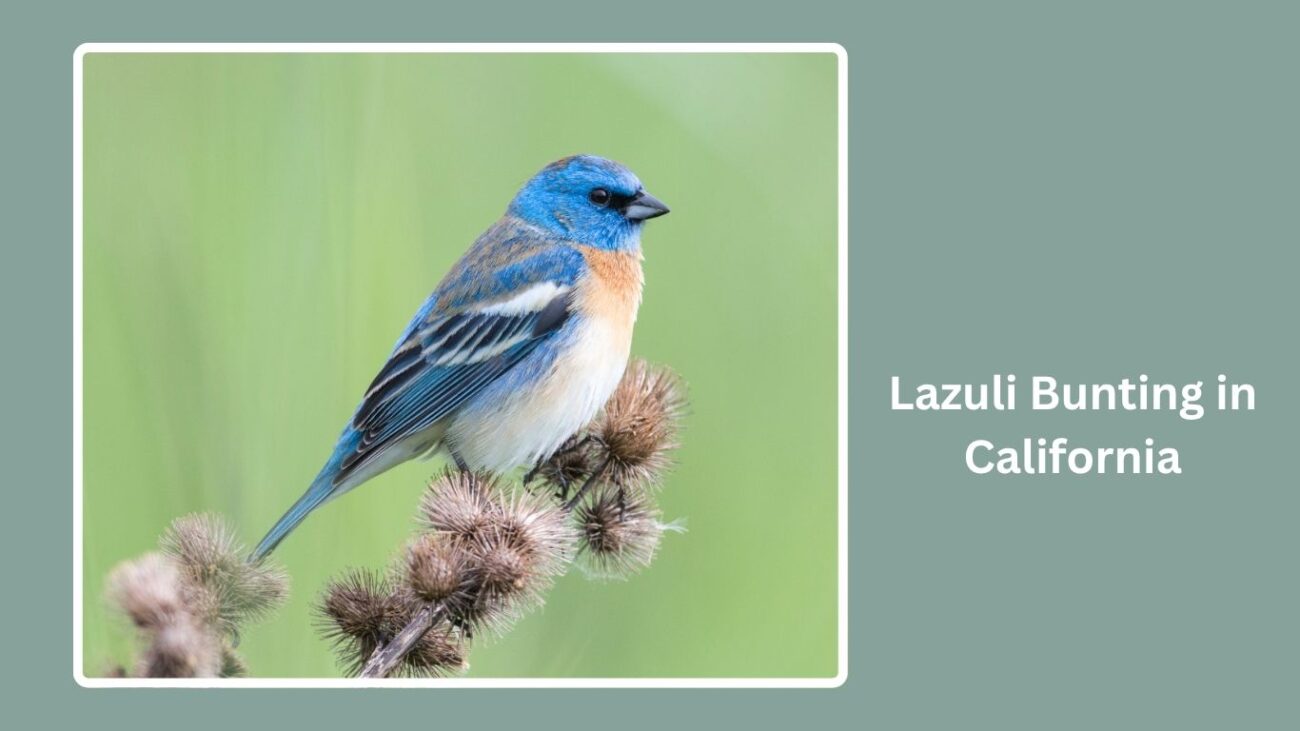
The Lazuli Bunting is a small, vividly colored songbird that lights up California’s foothills and thickets in spring and summer. It’s named after the gemstone “lapis lazuli” for its brilliant blue feathers.
Identification
- Size: Small finch-like bird, about 5–6 inches
- Male: Bright blue head and back with a rusty-orange breast and white belly
- Female: Pale brown with subtle blue on wings and tail
- Bill: Short and conical
- Tail: Medium-length and rounded
- Posture: Perched upright while singing
Habitat and Range in California
Lazuli Buntings are seen across California’s lower mountains, open woodlands, and brushy hillsides during the warmer months. They breed throughout the state, especially in the Sierra foothills and coastal ranges, then migrate south by late summer.
Behavior and Diet
They eat seeds, insects, and berries, often foraging low in shrubs or on the ground. Males are known for their cheerful, warbling songs delivered from exposed perches. These buntings often mix with other small birds like finches and sparrows.
9. Belted Kingfisher in California

The Belted Kingfisher is a striking bird often spotted near rivers, lakes, and coastlines in California. With its large head, shaggy crest, and rattling call, it stands out among other blue birds. It can be seen year-round in many parts of the state, especially near water.
Identification
- Size: Medium, about 11–13 inches
- Color: Slate-blue above with a white belly
- Chest: Broad blue chest band (females have an additional rusty band)
- Head: Large with a bushy crest
- Bill: Long, straight, and dagger-like
- Flight: Fast and direct with rapid wingbeats
Habitat and Range in California
Belted Kingfishers are found across California, especially near fresh or brackish water. Common spots include rivers, marshes, lakes, and estuaries. While some migrate south in winter, many remain year-round along the coast and in lowland areas with unfrozen water.
Behavior and Diet
They feed mainly on fish, diving headfirst from a perch or mid-air. Kingfishers are solitary and territorial, often heard before they’re seen due to their loud, rattling calls. They nest in burrows dug into riverbanks or dirt embankments.
10. Violet-green Swallow in California

The Violet-green Swallow is a beautiful, high-flying bird with a glossy blue-green back and a unique violet hue in its wings and tail. It’s a migratory species that visits California during the breeding season, especially in mountainous and forested regions.
Identification
- Size: Small and slim, about 4.5–5.5 inches
- Color: Greenish-blue back with violet reflections
- Underparts: Bright white from chin to under-tail
- Face: White arcs around the eyes
- Wings: Long and pointed, darker with a violet sheen
- Tail: Slightly forked
Habitat and Range in California
This swallow breeds throughout California, particularly in the Sierra Nevada, coastal ranges, and forested canyons. They prefer open areas near water or clearings surrounded by trees. Most leave by early fall to winter in Mexico and Central America.
Behavior and Diet
Violet-green Swallows feed on flying insects, catching them in swift, acrobatic flights. They nest in tree cavities, cliffs, or nest boxes and often join mixed swallow flocks during migration. Their graceful flight and shimmering colors make them a favorite among birdwatchers.
11. Purple Martin in California
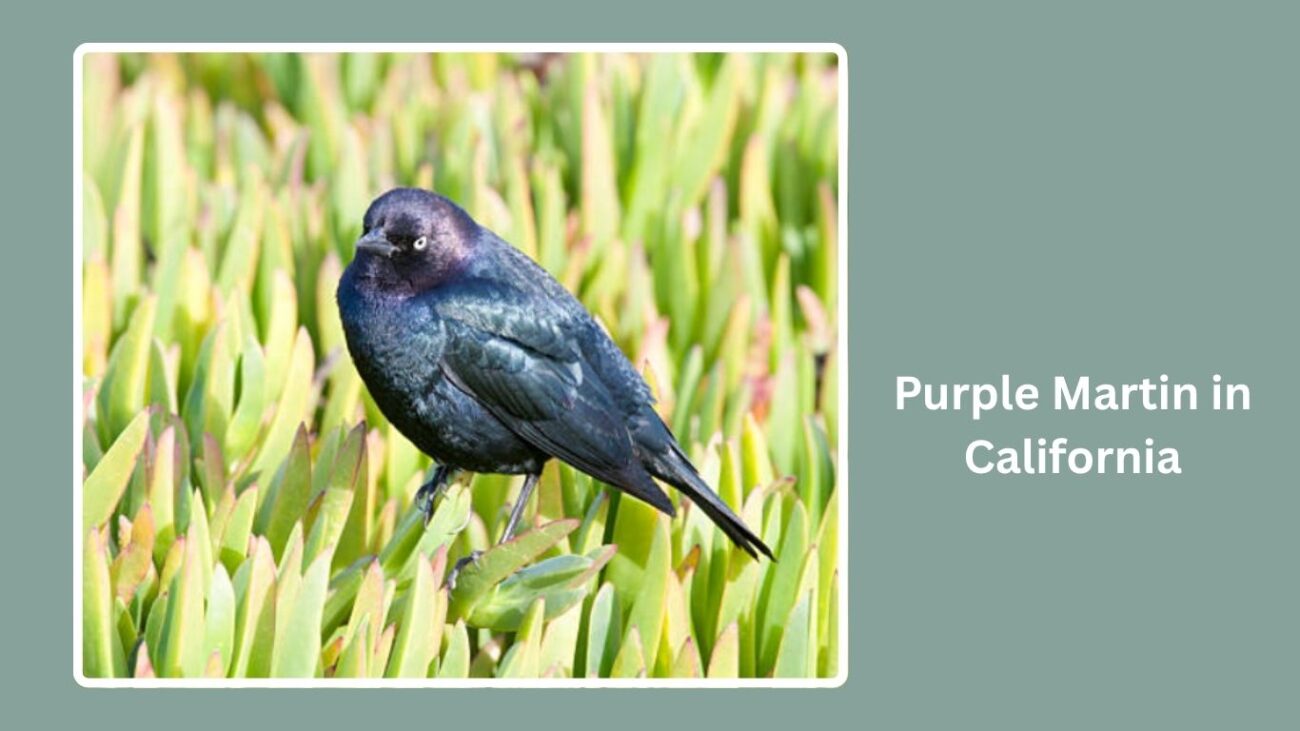
The Purple Martin is the largest swallow in North America and is known for its glossy blue-purple feathers and sociable nature. While their presence in California is more limited than in other states, they breed in select areas, especially in northern and coastal regions.
Identification
- Size: Large swallow, about 7.5–8 inches
- Male: Shiny dark blue-purple all over
- Female: Lighter belly with a dusky chest and grayish face
- Wings: Long and pointed
- Tail: Slightly forked
- Flight: Swift and buoyant
Habitat and Range in California
In California, Purple Martins are mostly found along the coast, especially in the San Francisco Bay Area and parts of Northern California. They favor open areas with nearby water and often nest in cavities in tall trees, bridges, and old woodpecker holes.
Behavior and Diet
They feed exclusively on flying insects, often high above the ground. Purple Martins are colonial nesters, sometimes using man-made structures. They’re known for their cheerful calls and aerial acrobatics during group flights. Their population in California is considered sensitive and monitored closely.
12. Pinyon Jay in California
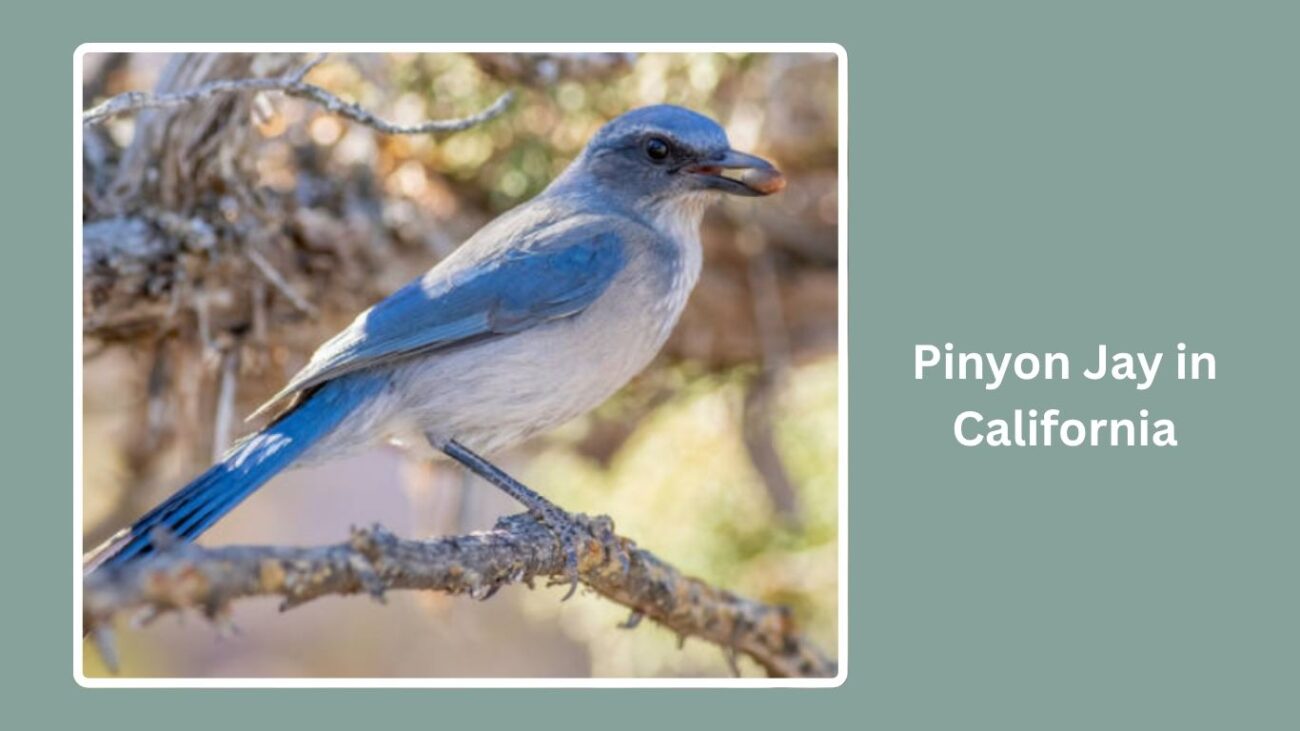
The Pinyon Jay is a social, blue-gray bird with strong ties to pinyon-juniper woodlands. Though more common in neighboring states, it can be found in eastern California near the Nevada border, especially in the Great Basin region.
Identification
- Size: Medium, about 10–11 inches
- Color: Uniform bluish-gray with a slightly lighter belly
- Bill: Long, straight, and black
- Crest: None (unlike many other jays)
- Eyes: Dark and expressive
Habitat and Range in California
In California, Pinyon Jays are mostly restricted to the eastern Sierra slopes and desert woodlands in Mono and Inyo counties. They prefer dry, open forests with lots of pinyon pines, which provide both food and nesting space.
Behavior and Diet
They feed heavily on pinyon pine seeds, storing them for later use, but will also eat insects and berries. Pinyon Jays live and move in noisy flocks, often seen flying in tight groups. Their social structure is complex, and they nest communally in dense tree clusters.

